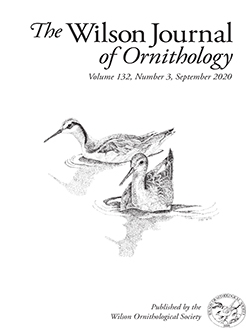Mutualistic interactions, such as animal pollination, structure biodiversity in the Neotropics. In coastal montane garúa (fog) forests of Ecuador, 2 mass-blooming plants attract up to 17 species of nectar-feeding birds, especially hummingbirds. We describe avian guilds and behavior at the 2 mass bloomers and use mist-netting capture rates to test 3 predictions: (1) capture rates of territorial hummingbirds will increase with flower abundance on the mass bloomer they defend, (2) hummingbirds known to mainly use other flowers will show no change in capture rate during mass blooms, and (3) field observations of interspecific interactions will be reflected in capture rates. We statistically modeled capture rates of bird species, species richness, and Shannon Diversity Index in response to flower abundance on the 2 mass bloomers during 16 flowering seasons (1996–2013). Capture rates of 8 nectar-feeding species increased significantly with increased abundance of white-flowered Psychotria hazenii blooms, while only one species, Speckled Hummingbird (Adelomyia melanogenys), increased significantly in response to red-flowered Stenostephanus clarkii flower abundance, and aggressively defended these flower patches. Violet-bellied Hummingbird (Damophila julie) showed the strongest capture rate response to increased abundance of P. hazenii flowers, and was the dominant territorial hummingbird around these shrubs. Endangered Esmeraldas Woodstars (Chaetocercus berlepschi) and Little Woodstars (Chaetocercus bombus) visited both mass bloomers, but had a statistically significant increase only with P. hazenii highest flower abundance suggesting that restoration to recover endangered woodstars will benefit more from plantings of P. hazenii than S. clarkii. We conclude that flower abundance and defendability structure avian pollinator networks at these mass bloomers more so than nectar quality, quantity, or secretion rates, all of which were similar.
How to translate text using browser tools
28 April 2021
Flower abundance and defendability at two mass-blooming understory plants structure nectar-feeding bird guilds in garúa forest of western Ecuador
C. Dustin Becker,
Thomas M. Loughin,
Evelyng Astudillo-Sánchez,
Ana E. Agreda,
Susan M. Wethington
ACCESS THE FULL ARTICLE
avian conservation
avian territoriality
hummingbirds
mutualisms
nectar-feeding birds
tropical community ecology
tropical forest restoration





